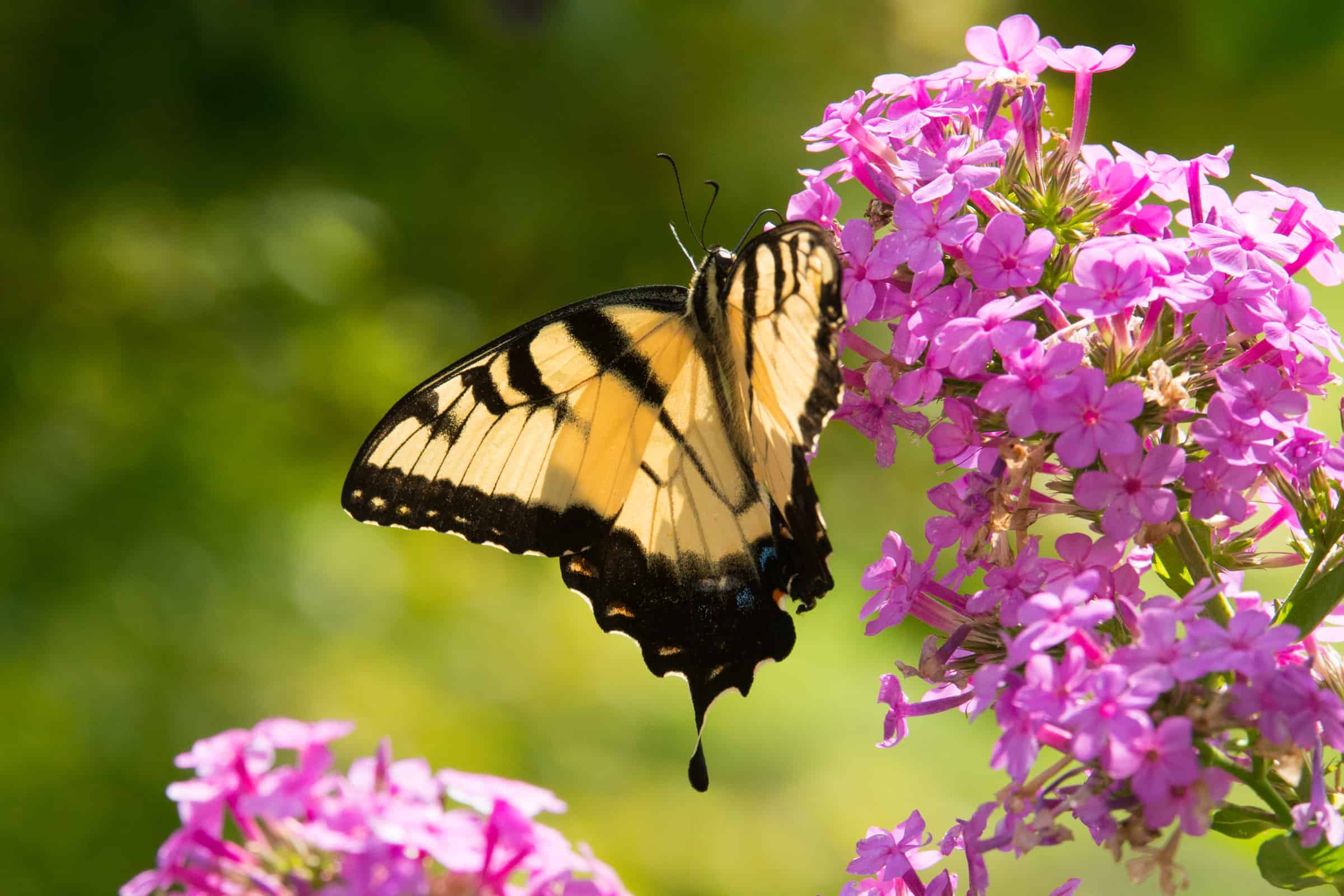Photographing butterflies as they dance from flower to flower is a way to capture that beauty. When you immerse yourself in the surroundings where butterflies dwell, expect to be mesmerized by the beauty of nature’s miracles.
The majestic and vibrant colors of butterflies make them the perfect subject for photographs; however their quick and erratic movements make them difficult to capture.
- If you have a point and shoot camera choose a sports mode that will give you a faster shutter speed for when the wings are beating.
- If you have a DSLR go to manual mode: choose a fast shutter speed and an f-stop between 5.6 and 11 and then adjust your ISO accordingly.
Find a spot where butterflies flock to and take a moment to enjoy the beauty. These splendid creatures tend to fly to and from the same flower repeatedly. The incredible speed and erratic movements of butterflies make capturing them in mid flight very difficult. Don’t frustrate yourself: be patient and wait for them to come to you.
Get your camera ready by taking pictures of flowers until the creatures pause to drink some nectar. Look to see what will be behind the butterfly from your shooting spot to make sure you have a nice background. Don’t forget to respect the space you are in by taking care not to step on other flowers while you are taking photos.
Position yourself so that the sun light is falling directly on the butterfly (be careful not to capture your own shadow) or choose a spot in even, open shade. The bright light will allow your camera to use a faster shutter speed while keeping more things in focus. Open shade will give you a softer light but you may have to sacrifice shutter speed and/or depth of field.
The lens you choose should be long enough so that you have a little distance between you and your subject since quick movements will make your subject take flight. Zooming in on the butterfly will give you a little space in between and will also help to soften the background.
If you can’t zoom in as much as you would like, incorporate the flowers into your photograph. A macro lens will allow you to get incredible close ups and details.
When a butterfly lands you could have anywhere from a few seconds to a few minutes to create your photo. Try to photograph the butterfly from the profile or side view to make sure that more of your butterfly is in focus. Focus on the head of the creature if its wings are open.
If the butterfly is stationary, try moving in closer or changing your angle. When the butterfly takes flight, watch for a moment to see if it’s going to return or going to a different flower. Often they will come back to the same flower a few times giving you time to perfect your images.
Experiment with your angles, the background and composition until you create some beauty of your own. If you would like to learn how to take better photographs, our resident photographer Diana Lang is available for private classes.
Make sure you bring your cameras to Calgo Gardens’ Butterfly Program on August 4 at 10:00. The free event is full of information about Monarchs. And the butterfly garden is the perfect place to find butterflies to photograph!

